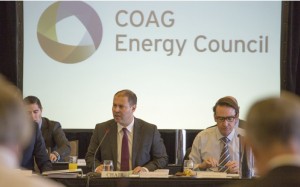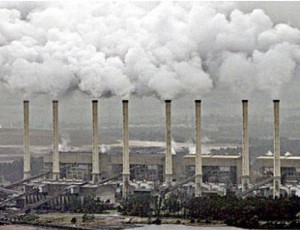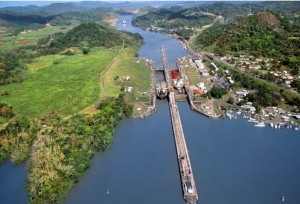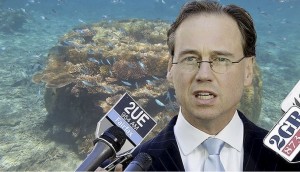
Greg Hunt explaining the Safe-Guard mechanism. Simulated Barrier Reef backdrop taken at local Dentist.
After several years in the doldrums the burning of coal by the electricity sector is on the way up with carbon emissions from brown and black coal trending upwards. On current estimates we’re using 5 per cent more coal than last year, and after removal of the carbon tax, the indices suggest a steady rise. Coal usage is on track to exceed the benchmark set on emissions, which were set at their peak between 2009 to 2014. The Environment Minister Mr Greg Hunt was cautiously upbeat; ‘At this rate our baselines for safeguard mechanism will kick in’.
As described in the guardian, the mechanism is quite simple; ‘The revelation that electricity emissions are trending steadily upwards comes as the Turnbull government begins consultations on setting “baselines” for its “safeguard” mechanism, which is supposed to ensure that rising electricity and industrial emissions don’t undo the greenhouse abatement bought through the government’s emissions reduction fund. The baselines will apply after 2020 for new facilities or significant expansions. The electricity industry will have a sector-wide baseline, with individual company baselines only kicking in if the sector-wide baseline is exceeded. But the electricity sectoral baseline will be set at the high point of sectoral emissions over the period 2009-10 to 2013-14 and individual baselines will also be set at each facility’s highest annual emissions between 2009-10 and 2013-14’.
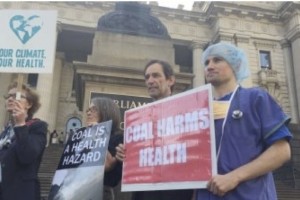
Latrobe Valley Doctors. ” Coal related health effects yet to be proved” (Australian Council of Minerals and Energy)
Also in anticipation of the repair of the Basslink cable Brown coal emissions fell slightly in the year to March 2016, almost entirely because Victoria’s brown coal generators stopped exporting power to Tasmania. But Saddler says Tasmania’s energy crisis – caused by low rainfall and the fact that the undersea cable linking the island state to the mainland broke in December – means “large volumes of brown coal electricity are certain to flow south through the Basslink cable as soon as it has been repaired, so as to allow hydro storage levels to recover”.
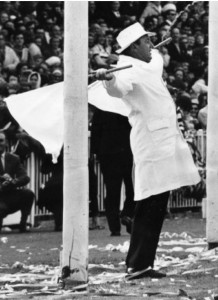
Base- Guard honing his skills. ‘A flag is waved when emissions really go off the scale’, (Environment Minister)
The Minister, countering a demonstration by Latrobe Valley doctors, urging the Federal and State Governments to phase out brown coal was dismissive, describing the Federal governments plan as; ‘far- reaching, and best practise, moving forward’. ‘The baselines are really an effective carbon mitigation scheme, and though i’m hesitant to suggest it’s words best practice, the idea is that when the emissions target is exceeded the Base-line establishes an entirely new Base-line, and then once this Base-line is reached, there’s a sliding scale of carbon reduction mechanisms that kick in’.
Asked what the mechanisms were, he listed an innovative ten point plan; ‘the first is to recognise that carbon emissions are increasing, and produce a white paper. The white paper will be produced on recycled, brown paper, and the report when digested by the usual suspects, (green, environmental lobby groups) will be recycled by being fed into the furnaces at Loy Yang as a carbon abatement initiative. Our second step when emissions get really significantly BOT, (back on track) is to offset the emissions by planting trees somewhere else in Australia, or get a green rebate by planting a tree or shrub in one of our near neighbours, New Guinea or Indonesia.
And if you think that’s tokenistic, we’re actively re-painting the dirty-looking coal plants, Loy Yang, and Morwell in a green powder-coat, so they’ll look very nice, and with some solar panels, create quite a nice light show which will look very spectacular at night. It demonstrates our capacity for community investment and innovation in accordance with the ‘Ideas Boom”
We did have a plan to shelve the Hazelwood plant which has been described as archaic, but after submissions from the COAG energy council have decided it must be retained to assure Base-load. Base-load is offset by the Base-line. The Base-line and Base-load work in tandem with the Safe-Guard mechanism. This is operated , (and we’re finalising the specialist training right now), by engaging a Base-line Base-guard, as a highly trained specialist who has a nice uniform and will toot on this whistle, when the carbon emissions get really high. This will alert the afflicted Latrobe Valley populace that we’re really serious about doing something about climate change. And if these levels are exceeded we grant the electricity industry a tax payer rebate, a Base-Sum to offset the Base-Load, in recognition of the breach of the Base- Line, as indicated by the Base- Guard. The highly trained Base- Guard is also trained to utilise a Base- Line mitigation metric , (a piece of chalk) and draws a graph, highly visible to the public on the external surface of the cooling tower. This indicates a recognition that 2009-2014 levels have been significantly exceeded.
It indicates how serious we are about reducing, and providing incentives for these power companies to reduce their emissions. And we know that with these mechanisms, we’ll keep a lid on carbon, and these companies, will do the right thing. Because that’s what the energy industry is all about. And if you don’t believe me just understand what the head of the Carbon Utilities Network Team said to me…..”Always a far canal in Panama. The Canal in Panama is a very big Far Canal indeed’.

